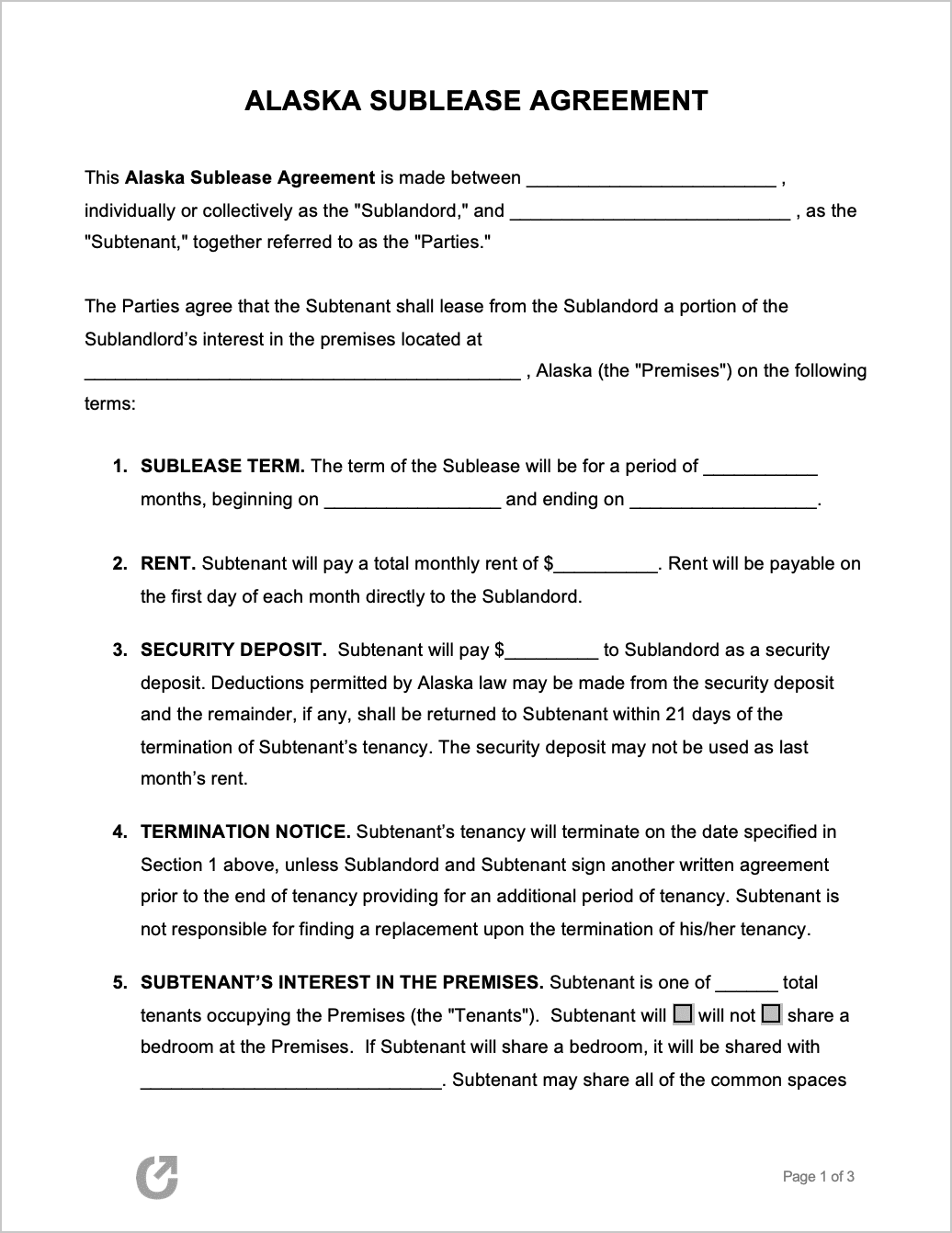Alaska Sublease Agreement
An Alaska Sublease Agreement is an agreement between the current renter of a room or property and a new renter, called the sublessee. Sublessing prevents the renter from facing a “breach of contract” for exiting their lease early. Instead, the sublessee becomes the new resident of the facility and takes over the monthly payments. However, Alaska law prohibits subleasing unless the tenant receives direct permission from the landlord. The landlord and tenant must solidify their agreed-upon arrangement through a signed document that contains their personal information (§ 34.03.060).
Sublessor Screening: Alaska Rental Application
State Laws
Statute: § 34.03.060
Subleasing Allowed? Tenants can only sublet if they receive written permission from their landlord. Landlords need to approve of sublessees themselves. All potential sublessees need to deliver a written application to the landlord containing:
- Their name, age, and present address;
- Their occupation, place of employment, and the name and address of their employer;
- The number of additional occupants that will be living with the applicant;
- A minimum of two (2) credit references, or references of responsible individuals that can confirm the financial responsibility of the prospective sublessee; and
- The name(s) and address(es) of all prior landlords the prospective sublessee had during the past three (3) years.
Once the landlord receives the application, they have fourteen (14) days to approve or refuse the applicant sublessee. If the landlord fails to respond within fourteen (14) days, their silence can be assumed as approval for the applicant. To reject, they need to deliver a signed rejection containing the reason(s) for the sublessee’s rejection. The following are permitted reasons landlords can use to reject an applicant:
- Inadequate credit and/or financial responsibility;
- Too many occupants;
- One (1) or more occupants under the age of eighteen (18);
- The sublessee’s unwillingness to comply with the terms established by the original “master” lease;
- The sublessee (or other proposed occupants) have pets;
- The sublessee intended to conduct commercial activity in the dwelling; or
- A reference provided by the sublessee gave the landlord a signed document stating the applicant’s previous abuses/poor behavior.
